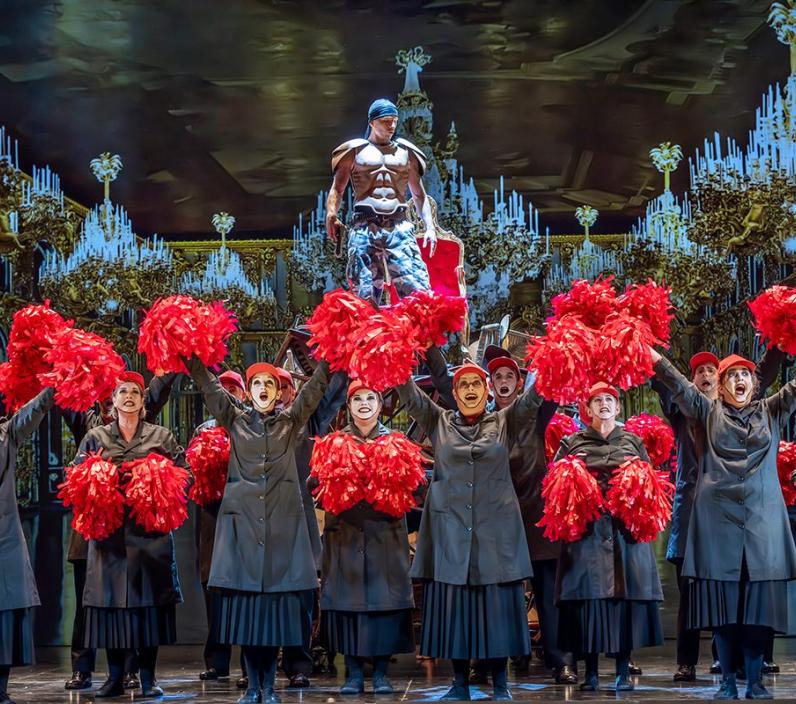
Reinventing Purcell
In honour of Opera North’s Masque of Might, Nicholas Payne reflects on recent productions offering new ways to stage the work of Henry Purcell.
Most secular music composed in the century or so between the English Restoration and the French Revolution derives from dances: the fabric of life is measured in gavottes, gigues, minuets, sarabandes. Mark Morris, most musical of contemporary choreographers, has naturally drawn on that period for his inspiration. Bach, Rameau, Handel, Gluck, Mozart are recurring favourites, but he once told me that the composer he loved above all the others was the Englishman Henry Purcell. Yet his legacy in opera is sparse.
Purcell’s Indian Queen is an exotic and elusive curiosity, a drama composed in the late 17th century about conflict in remote 16th century Latin America which carries a resonance for postcolonial studies today. Add the further ingredient that Purcell died unexpectedly young at the age of 36, without having completed the work, and it becomes a tantalisingly insubstantial Eldorado, demanding to be pursued but never fully to be grasped.
Purcell is the father of English opera, while at the same time the reason why it never developed. His only complete ‘opera’ Dido and Aeneas is a masterpiece, but a chamber work lasting no more than an hour and intended for semi-private performance. His more elaborate works for larger stages - Dioclesian, King Arthur, The Fairy Queen and The Indian Queen - have been described as ‘semi-operas’ in which music is incidental and complements the spoken play with instrumental, vocal and danced divertissements. They were elaborately staged at the Dorset Garden Theatre and Theatre Royal Drury Lane, and may be the forerunners of the popular ‘musical’ rather than the more rarified ‘opera’.
(Portrait) Henry Purcell in 1695 painted by John Closterman
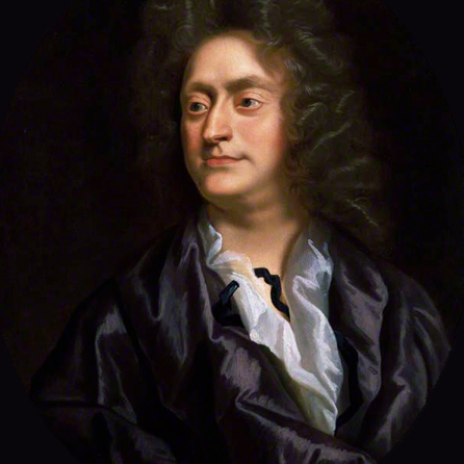
Despite Purcell’s constantly inventive music, the ‘semi-operas’ demand imagination and expense if they are to be brought alive on stage. The Fairy Queen benefits from a familiar plot derived from Shakespeare’s Midsummer Night’s Dream, but suffers from the bowdlerisation of its text by the late 17th century adaptation. By contrast, the principal author of the plays King Arthur and The Indian Queen is John Dryden, the foremost poet of the age, and their language is often magnificent. That the old-fashioned patriotism of King Arthur can still inspire was shown by the tercentenary production devised by William Christie and Graham Vick for the Théâtre du Châtelet and the Royal Opera House Covent Garden in 1995. Performed with the full text and lavish scenic effects, the show lasted four hours. As I wrote in the programme at the time, it was a ‘historic joint project. King Arthur celebrates Britain. This new production also celebrates, right down to the Company’s travel by Eurostar, Britain’s newfound links with France’. It was a happy irony that Purcell’s most overtly English opera is also the most indebted to French musical influences, notably the example of Lully. We enjoyed casting the lovely French soprano Véronique Gens to sing the iconic song apostrophising Britain, ‘Fairest isle, all isles excelling’.
The Indian Queen defies similar treatment, principally because Henry Purcell died before completing his work, and the music subsequently composed by his younger brother Daniel and others is inferior, leading to an anticlimactic last act. Secondly, what to make of a plot which locates Mexico next to Peru and involves dizzying changes of loyalties from its central character Montezuma? If Dryden’s utopian vision of Britain is hard to evoke, how much more distant are the motivations and machinations of his characters from another era and continent. Whoever undertakes the challenge has the task of reconstructing both drama and music. That involves creative choices.
Two different but imaginative attempts have been made during the past decade. Teodor Currentzis and Peter Sellars joined forces in Perm in 2013 for their version, which subsequently travelled to Teatro Real in Madrid and English National Opera in London. Emmanuelle Haïm and Guy Cassiers launched their edition at Opéra de Lille in 2019 and it reached Opera Vlaanderen in Antwerp in 2023.
Sellars had been obsessed with The Indian Queen for twenty years. I recall talking with him over a meal at the Triangel restaurant near the Grosses Festspielhaus in Salzburg in 1994, and his conviction that the heart of the story was the titular queen’s forgiveness of the invaders who had betrayed her and her country. So, it is fitting that his version finally reached Salzburg’s Felsenreitschule, albeit in concert form, this summer. In order to create a more indigenous Mayan community, he supplemented Dryden’s text with new material by Katherine Philips and extracts from the novel La niña blanca y los pájaros sin pies by Rosario Aguilar, as well as poetry by the 17th century George Herbert. He enriched the surviving music with other secular songs by Purcell, such as ‘Music for a while’, and, more radically, with five of the composer’s most intricate and profound anthems based on biblical texts. His objective was to bring to life the full-length opera which Purcell never wrote, the development promised by Dido and Aeneas but never realised in his lifetime. When this opera was performed in Madrid, Currentzis and his Music Aeterna forces also brought a vivid semi-staging of Dido as a pendant.
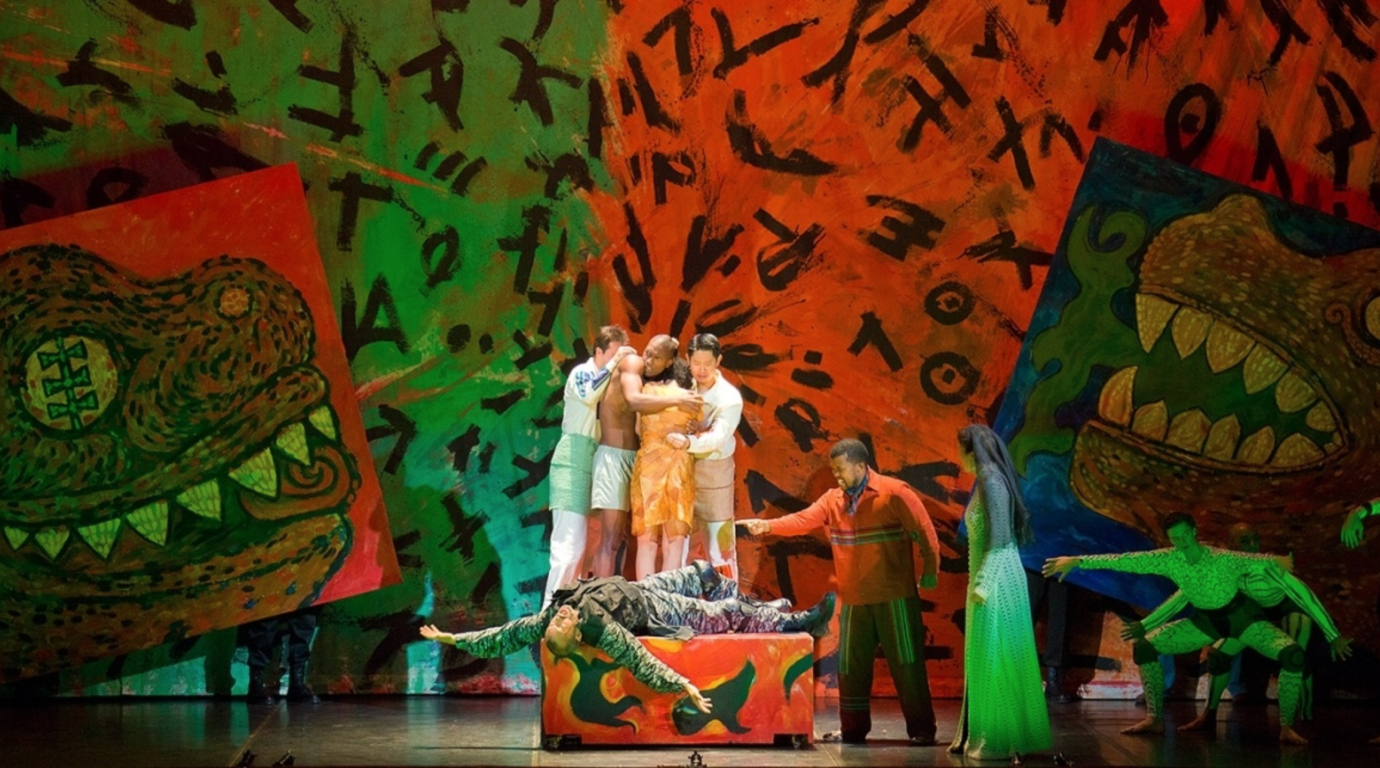
The Sellars/Currentzis Indian Queen did not claim to be authentic. It rediscovered the husk of an incomplete work and filled it with glorious music and a contemporary political relevance unimaginable to its original creators. Its message was especially telling in Spain, because of the history of its conquistadors' exploitation of the South American continent.
Haïm and Cassiers adopted a less radical approach, but the result was equally daring. Like Christie and Vick with King Arthur, they risked resuscitating the old play and employed good English actors to deliver it, offsetting their natural physical presence with arresting photographic and video imagery. The singers emerged from this background for the vocal numbers, occasionally assuming a character, such as Montezuma’s mother Amexia, but more often acting as commentators or figures invoked by the magician Ismeron to inhabit Queen Zempoalla’s dream at the end of Act 3. The danger of this approach is that there are passages, especially in the first two acts, where music is only incidental to a drama whose concerns may seem remote to a modern opera audience. Yet, as the queen is assailed by her fears and succumbs to her dream in Act 3, the effect of the anonymous voices is cumulative and mesmeric.
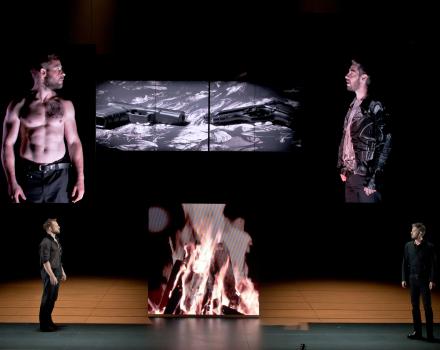
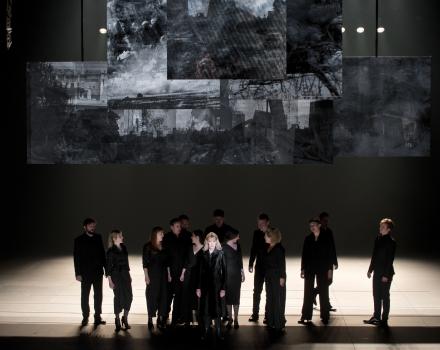
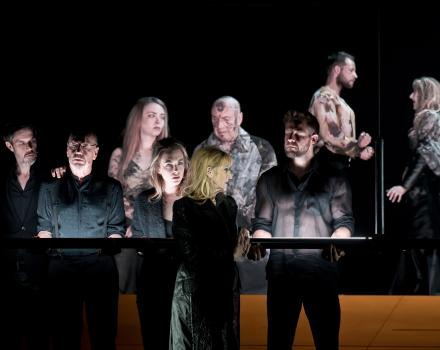
Acts 4 and 5 become more dependent on imported material, so as to maintain the musical quality and avoid the sub-standard Daniel Purcell masque of Act 5. Haïm’s choice is unerring. There is a moment of magic near the start of Act 4 and after an interpolated tune from Purcell’s incidental music for The Tempest, when the soprano who will impersonate Amexia stops time to sing ‘So when will glitt’ring Queen of night’ from the Yorkshire Feast Song. Then Act 5 delivers the masterstroke. The rivalry for the Inca’s daughter Orazia between Montezuma and the rejected Mexican prince Acacis culminates in the latter’s suicide, which will be followed by that of his mother, the Indian queen Zempoalla. Out of tragedy is born healing and love, and the former queen Amexia draws the threads together with the sublime ‘A prince of glorious race’ extracted from Purcell’s Ode for the birthday of the Duke of Gloucester. Lest the transformation appear too glib, it is followed by the choir singing the elegiac ‘Man that is born of woman has a short time to live’ from the Music for the Funeral of Queen Mary. Finally, to return to the present with a smile, the actor playing the Inca king invites the audience to express its appreciation, in an echo of Puck’s epilogue in A Midsummer Night’s Dream.
For an Englishman, it was humbling to partake of this French and Belgian tribute to our greatest composer. The painstaking re-imagining and re-clothing of a 325-year-old torso should by rights be seen in Britain. Meanwhile, David Pountney and Harry Bicket have devised a show which they have entitled Masque of Might (for Opera North and streamed on OperaVision); it appropriates eight numbers from The Indian Queen, alongside others from the semi-opera Dioclesian and the incidental music for The Tempest and the beautiful ‘O, let me weep’ from The Fairy Queen, and starts with the overture to Timon of Athens.
Pountney uses his skill as a librettist to fashion a narrative which addresses contemporary political, environmental and ethical themes in a format which echoes that of the ‘Restoration’ masques, a joyous mixture of song, dance and spectacle whose purpose is to entertain as much as to instruct. Like Sellars and Currentzis, Pountney and Bicket have chosen to enrich their material with both secular odes and sacred music, including the anthem ‘Hear my Prayer, O Lord’, thereby adding depth and texture to their entertainment. The result is admittedly a concoction, in the manner of a pasticcio, but at the same time a genuinely creative re-imagining of a historic form of popular theatre for the present day.
Masque of Might and The Indian Queen may not qualify as the full-length operas which Purcell never composed, but they offer an astonishing indication of where our musical theatre might have led, had its growth not been stunted by his early death and the Hannovarian preference for importing Italian models instead. It took 250 years to regain the initiative with Peter Grimes.
With thanks to Opera magazine which commissioned this article for its October 2023 issue.
